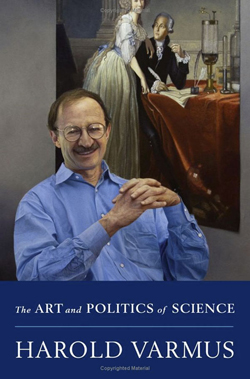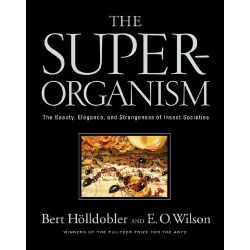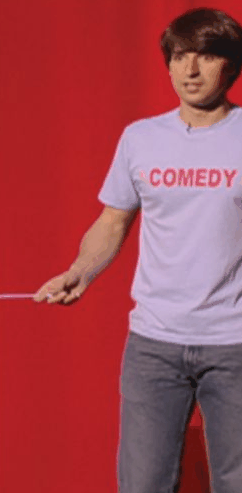Charles M. Blow in The New York Times:
 According to an ABC News/Washington Post poll released last month, twice as many blacks as whites thought racism was a big problem in this country, while twice as many whites as blacks thought that blacks had achieved racial equality. Furthermore, according to a 2003 Gallup poll, two in five of blacks said that they felt discriminated against at least once a month, and one in five felt discriminated against every day. But, a CNN poll from last January found that 72 percent of whites thought that blacks overestimated the amount of discrimination against them, while 82 percent of blacks thought that whites underestimated the amount of discrimination against blacks.
According to an ABC News/Washington Post poll released last month, twice as many blacks as whites thought racism was a big problem in this country, while twice as many whites as blacks thought that blacks had achieved racial equality. Furthermore, according to a 2003 Gallup poll, two in five of blacks said that they felt discriminated against at least once a month, and one in five felt discriminated against every day. But, a CNN poll from last January found that 72 percent of whites thought that blacks overestimated the amount of discrimination against them, while 82 percent of blacks thought that whites underestimated the amount of discrimination against blacks.
What explains this wide discrepancy? One factor could be that most whites harbor a hidden racial bias that many are unaware of and don’t consciously agree with.
Project Implicit, a virtual laboratory maintained by Harvard, the University of Washington and the University of Virginia, has administered hundreds of thousands of online tests designed to detect hidden racial biases. In tests taken from 2000 to 2006, they found that three-quarters of whites have an implicit pro-white/anti-black bias. (Blacks showed racial biases, too, but unlike whites, they split about evenly between pro-black and pro-white. And, blacks were the most likely of all races to exhibit no bias at all.) In addition, a 2006 study by Harvard researchers published in the journal Psychological Science used these tests to show how this implicit bias is present in white children as young as 6 years old, and how it stays constant into adulthood.
(You can take the test yourself.)
So why do so many people have this anti-black bias?
I called Brian Nosek, an associate professor in psychology at the University of Virginia and the director of Project Implicit, to find out. According to him, our brains automatically make associations based on our experiences and the information we receive, whether we consciously agree with those associations or not. He said that many egalitarian test-takers were shown to have an implicit anti-black bias, much to their chagrin. Professor Nosek took the test himself, and even he showed a pro-white/anti-black bias. Basically, our brains have a mind of their own.
This bias can seep into our everyday lives in insidious ways.
More here.
From Harvard Magazine:
 Despite outward signs that I had chosen a life of studying and teaching literature, soon after starting my graduate work at Harvard, I began to suffer some further internal doubts about abandoning medicine. The graduate curriculum in English literature was not especially onerous, but it felt like a prolongation of college. Most of my courses were heavily populated with Harvard and Radcliffe undergraduates. First-year graduate students had little sense of identity as future scholars, we were often taught by older graduate students, and Harvard’s famous professors, with the notable exception of the wonderful playwright and poet William Alfred, paid little attention to us. Making a commitment to literary scholarship under these circumstances was not easy.…
Despite outward signs that I had chosen a life of studying and teaching literature, soon after starting my graduate work at Harvard, I began to suffer some further internal doubts about abandoning medicine. The graduate curriculum in English literature was not especially onerous, but it felt like a prolongation of college. Most of my courses were heavily populated with Harvard and Radcliffe undergraduates. First-year graduate students had little sense of identity as future scholars, we were often taught by older graduate students, and Harvard’s famous professors, with the notable exception of the wonderful playwright and poet William Alfred, paid little attention to us. Making a commitment to literary scholarship under these circumstances was not easy.…
Occasionally on Saturday mornings, I traveled across the Charles River to join some Amherst classmates at Harvard Medical School, while they sat in the Ether Dome at the Massachusetts General Hospital, entranced by diagnostic dilemmas discussed at the weekly clinical pathology conference. These stories struck me as far more interesting than those I was reading, and my medical school friends expressed genuine excitement about their work. They also seemed to have formed a community of scholars, with shared interests in the human body and its diseases and common expectations that they would soon be able to do something about those diseases.
These Saturday excursions probably account for an influential dream that I had one night about my continuing indecision. In that dream, my future literature students were relieved when I didn’t turn up to teach a class, but my future patients were disappointed when I didn’t appear. It seemed I wanted to be wanted.…
More here.
Friday, February 20, 2009

In 1909, pamphlets were dropped over the town of Milan containing Marinetti’s Futurist Manifesto, the centennial of which we are celebrating. Everything about this piece was exciting, its pace, its over-the-top scenery: We had stayed up all night, my friends and I, under hanging mosque lamps with domes of filigreed brass, domes starred like our spirits. . . . An immense pride was buoying us up, because we felt ourselves alone at that hour, alone, awake, and on our feet, like proud beacons or forward sentries against an army of hostile stars. Nothing is slow in this manifesto of speedy Futurism: “‘Let’s go!’ I said. ‘Friends, away! Let’s go!’” I love that kind of exalted certainty about a showy (manifest) endeavor. Of course, we have the right to ironize about the over-the-topness — who among us would so exaggerate the style and so magnify the substance as to make a larger-than-life-size poster, pointing at itself as a deictic genre? Look! Here! Now! Tristan Tzara, Papa-Dada himself, lays down the rules in 1918, and not just for Dada: “To proclaim a manifesto you have to want: A.B.C., thunder against 1, 2, 3.”
more from Poetry here.

One of the effects of reading Orwell’s essays en masse is to realize how very dogmatic—in the nonideological sense—he is. This is another aspect of his Johnsonian Englishness. From the quotidian matter of how to make a cup of tea to the socioeconomic analysis of the restaurant (an entirely unnecessary luxury, to Orwell’s puritanical mind), he is a lawgiver, and his laws are often founded in disapproval. He is a great writer against. So his “Bookshop Memories”—a subject others might turn into a gentle color piece with a few amusing anecdotes—scorns lightness. The work, he declares, is drudgery, quite unrewarding, and makes you hate books; while the customers tend to be thieves, paranoiacs, dimwits, or, at best—when buying sets of Dickens in the improbable hope of reading them—mere self-deceivers. In “England Your England” he denounces the left-wing English intelligentsia for being “generally negative” and “querulous”: adjectives which, from this distance, seem to fit Orwell pretty aptly. Given that he died at the age of forty-six, it’s scary to imagine the crustiness that might have set in had he reached pensionable age.
more from the NYRB here.

A natural history museum is really two museums, and when you’re in one of them, you can hardly imagine the other. I don’t know how many times I’ve wandered around the halls of the American Museum of Natural History, among the armored fish and the stegosaurs. But it wasn’t until I was a 26-year-old science writer that I had the chance to pass through to the other side. I wanted to learn about pterosaurs, those stork-faced, bat-bodied reptiles that soared for 150 million years. I found out about a Brazilian man named Alexander Kellner who was getting his Ph.D. at the museum, studying new fossils of pterosaurs from the Santana Formation. Kellner invited me to the museum, to take a look at the bones and talk about his ideas about what pterosaurs had actually been like in life. I followed his directions and came to the Grand Gallery. I waited by the Great Canoe, and eventually a gangly paleontologist emerged from the acoustic fog of school groups on field trips. He led me through exhibit halls, and then, between two dioramas, he stopped. At first I thought he was lost in thought, and then maybe that he had forgotten something. There was no reason, after all, to stop by a dim wall between a pair of displays. But then I heard keys ringing in Kellner’s hand. He slipped one into an invisible lock, and the wall swung open. We slid through and Kellner locked the door behind us. I was in the other museum.
more from Seed here.
On the Loveliness of our Intimate Repose
Jim Klein
Prettily quartered by the imaginary
line of eyelashes crossing
your nose above sleep-pursed lips
your child-like face lies anuzzle
on a red feather cushion.
Your fingers droop to piano keys.
Beyond orange-round-knees
veeing down to the vein-blue ankle
bent over your poor callused little toe,
a woman’s magazine lies open
on your blind breasts
while, to tick tock, bird chirp,
and refrigerator whirr,
I sit savoring Nabokov’s
itches and tickles
until I am moved to reach
for a yellow legal pad,
partly torn and dry-paste stiff,
crosshatched We and They,
cradling the eggs of round numbers,
to begin with the bleeding end
of a red felt tip pen
these notes on the loveliness
of our intimate repose.
From The Root:
 Eric Holder’s confrontational speech to members of the Justice Department on Wednesday spoke plainly and bluntly about the level of racial discourse in America. “Though this nation has proudly thought of itself as an ethnic melting pot,” he said, “in things racial we have always been and continue to be, in too many ways, essentially a nation of cowards.” However equivocal his windup, Holder’s line was a punch in the face to America. As top cop of the United States, it’s his job to play the disciplinarian—but the lengthy admonition, given in honor of Black History Month, by the first African American attorney general, was the verbal equivalent to shock and awe.
Eric Holder’s confrontational speech to members of the Justice Department on Wednesday spoke plainly and bluntly about the level of racial discourse in America. “Though this nation has proudly thought of itself as an ethnic melting pot,” he said, “in things racial we have always been and continue to be, in too many ways, essentially a nation of cowards.” However equivocal his windup, Holder’s line was a punch in the face to America. As top cop of the United States, it’s his job to play the disciplinarian—but the lengthy admonition, given in honor of Black History Month, by the first African American attorney general, was the verbal equivalent to shock and awe.
“On Saturdays and Sundays, America in the year 2009 does not, in some ways, differ significantly from the country that existed some 50 years ago,” Holder said. “This is truly sad.” He spoke, with a tinge of bitterness, of the “polite, restrained mixing that now passes as meaningful interaction but that accomplishes little.” Sure, blacks and whites mingle at the workplace or in the marketplace, on the subway or in line at the deli, but voluntary segregation, he assured his listeners, is still rampant.
America talked a lot about race during the 2008 campaign. We chewed over Barack Obama’s biraciality, his cleanliness and articulateness, the question of whether he'd be black enough, the reluctance of older blacks to back him, Michelle Obama’s American-ness and her collegiate views on race relations, the role of the Hispanic vote in sending western swing states into the blue column, and the maelstrom of commentary that followed the “revelation” that when it comes to race, Pastor Jeremiah Wright is not, in fact, a big fan of the United States.
More here.
From The New York Review of Books:
 Ants are so much a part of our everyday lives that unless we discover them in our sugar bowl we rarely give them a second thought. Yet those minuscule bodies voyaging across the kitchen counter merit a closer look, for as entomologists Bert Holldobler and Edward O. Wilson tell us in their latest book, they are part of a superorganism. Superorganisms such as some ant, bee, and termite colonies represent a level of organization intermediate between single organisms and the ecosystem: you can think of them as comprised of individuals whose coordination and integration have reached such a sophisticated level that they function with some of the seamlessness of a human body. The superorganism whose “hand” reaches into your sugar bowl is probably around the size of a large octopus or a garden shrub, and it will have positioned itself so that its vital parts are hidden and sheltered from climatic extremes, while it still has easy access to food and water.
Ants are so much a part of our everyday lives that unless we discover them in our sugar bowl we rarely give them a second thought. Yet those minuscule bodies voyaging across the kitchen counter merit a closer look, for as entomologists Bert Holldobler and Edward O. Wilson tell us in their latest book, they are part of a superorganism. Superorganisms such as some ant, bee, and termite colonies represent a level of organization intermediate between single organisms and the ecosystem: you can think of them as comprised of individuals whose coordination and integration have reached such a sophisticated level that they function with some of the seamlessness of a human body. The superorganism whose “hand” reaches into your sugar bowl is probably around the size of a large octopus or a garden shrub, and it will have positioned itself so that its vital parts are hidden and sheltered from climatic extremes, while it still has easy access to food and water.
The term “superorganism” was first coined in 1928 by the great American ant expert William Morton Wheeler. Over the ensuing eighty years, as debates around sociobiology and genetics have altered our perspectives, the concept has fallen in and out of favor, and Hölldobler and Wilson's book is a self-professed and convincing appeal for its revival. Five years in the making, The Superorganism draws on centuries of entomological research, charting much of what we know of the evolution, ecology, and social organization of the ants.
More here.
Sheila Melvin reviews The Moon Opera by Bi Feiyu, translated by Howard Goldblatt, in The National:
 As the spacecraft Apollo 11 hurtled toward the moon in July 1969, ground control made an unusual request to the three veteran astronauts aboard. It is recorded on the NASA transcript: “Houston: Among the large headlines concerning Apollo this morning there’s one asking that you watch for a lovely girl with a big rabbit. An ancient legend says a beautiful Chinese girl called Chang-o has been living there for 4,000 years. It seems she was banished to the moon because she stole the pill for immortality from her husband. You might also look for her companion, a large Chinese rabbit, who is easy to spot since he is only standing on his hind feet in the shade of a cinnamon tree. The name of the rabbit is not recorded.”
As the spacecraft Apollo 11 hurtled toward the moon in July 1969, ground control made an unusual request to the three veteran astronauts aboard. It is recorded on the NASA transcript: “Houston: Among the large headlines concerning Apollo this morning there’s one asking that you watch for a lovely girl with a big rabbit. An ancient legend says a beautiful Chinese girl called Chang-o has been living there for 4,000 years. It seems she was banished to the moon because she stole the pill for immortality from her husband. You might also look for her companion, a large Chinese rabbit, who is easy to spot since he is only standing on his hind feet in the shade of a cinnamon tree. The name of the rabbit is not recorded.”
Lunar Module Pilot: “OK, we’ll keep a close eye for the bunny girl.”
Not long after this exchange the lunar module landed on the Sea of Tranquillity, Neil Armstrong uttered “one small step for man, one giant leap for mankind”, and the jocular request was forgotten – except in the Chinese-speaking world, where Chang’e (as her name is now generally spelt) has been venerated and adored for millennia, especially by women.
While teaching English in Taiwan in the early 1990s, I was stunned when a passing reference to Armstrong’s moonwalk unleashed a deluge of scorn from a large class of telecommunications bureaucrats. Neil Armstrong was no hero, and he ought never dare show his face in Taiwan, my students – nearly all women – told me emphatically. When I asked why, the class responded in near unison: He didn’t find Chang’e!
More here.
From Salon:

From ScienceBlog:
 While U.S. intelligence officials have spent more than seven years searching fruitlessly for Osama bin Laden, UCLA geographers say they have a good idea of where the terrorist leader was at the end of 2001 — and perhaps where he has been in the years since.
While U.S. intelligence officials have spent more than seven years searching fruitlessly for Osama bin Laden, UCLA geographers say they have a good idea of where the terrorist leader was at the end of 2001 — and perhaps where he has been in the years since.
In a new study published online today by the MIT International Review, the geographers report that simple facts, publicly available satellite imagery and fundamental principles of geography place the mastermind behind the Sept. 11 attacks against the U.S. in one of three buildings in the northwest Pakistan town of Parachinar, in the Kurram tribal region near the border with Afghanistan.
“If he's still alive, he honestly could be sitting there right now,” said Thomas W. Gillespie, the study's lead author and an associate professor of geography at UCLA. “It is still the safest tribal area and city in the Federally Administered Tribal Areas (FATA) of northwest Pakistan and one of the only tribal areas that the U.S. has not bombed with its unmanned Predators.”
More here.
Thursday, February 19, 2009

Trust in financial matters and politics is not a local narrative, yet it has hardly anything common with the universal one. I might say that over the past twenty years the deficit of trust in capitalism and democracy has grown significantly and in parallel. What makes it more difficult to understand the source of this deficit of trust is that the causes of the financial crisis and the disenchantment with politics are not identical in old and new democracies. The same anti-capitalist or neo-liberal statements have a different meaning and completely different consequences in Paris and in Budapest. We have to grab these terms by the neck in all their formal identity, by means of their dictionary form so to speak, in order to see clearly the levels on which a fundamental link exists between different uses of language, as well as the different directions they take as a result of the differences in meaning, or the processes that are taking place mutually, with both the old and new democracies unknowingly generating problems because of mutual misunderstandings.
more from Salon) here.

Laughter was always a favourite device of ancient monarchs and tyrants, as well as being a weapon used against them. The good king, of course, knew how to take a joke. The tolerance of the Emperor Augustus in the face of quips and banter of all sorts was still being celebrated four centuries after his death. One of the most famous one-liners of the ancient world, with an afterlife that stretches into the twentieth century (it gets retold, with a different cast of characters but the same punchline, both in Freud and in Iris Murdoch’s The Sea, The Sea), was a joking insinuation about Augustus’ paternity. Spotting, so the story goes, a man from the provinces who looked much like himself, the Emperor asked if the man’s mother had ever worked in the palace. “No”, came the reply, “but my father did.” Augustus wisely did no more than grin and bear it. Tyrants, by contrast, did not take kindly to jokes at their own expense, even if they enjoyed laughing at their subjects. Sulla, the murderous dictator of the first century BC, was a well-known philogelos (“laughter-lover”), while schoolboy practical jokes were among the techniques of humiliation employed by the despot Elagabalus. He is said to have had fun, for example, seating his dinner guests on inflatable cushions, and then seeing them disappear under the table as the air was gradually let out.
more from the TLS here.
 The author of many novels, including the brilliant and disturbing Season of Migration to the North, is dead. In the BBC:
The author of many novels, including the brilliant and disturbing Season of Migration to the North, is dead. In the BBC:
Anwar Hamed, the acclaimed author's former BBC Arabic Service colleague, says he bestrode the world of Arabic literature like a colossus.
“Literary critics of all schools agree that Tayeb Salih conquered the world just as Mustafa Said, the hero of his novel, The Season of Migration to the North, conquered the streets, bars and academic institutions of Europe.Yet he did not leave behind the stereotypical image of Sudan, his was a wondrous desert world haunted by mysteries, secrets and romantic tales.”
Salih's characters, immersed in local colour, were able to speak a language easily understood by his readers even those who could not get to grips with the rural Sudanese expressions he used.
In The Wedding of Zein and Dumat Wad Hamed, Salih conveys the atmosphere of a Sudanese village with such vitality that the characters seem like three dimensional people.
In the Season of Migration to the North, he deliberately focuses on the contradictions innate in the social and moral convictions held by his society.
In all his works, Salih's unique talent for building characters, weaving the background against which they live and revealing their social origins shines through the dialogue that reverberates with life, even when it is immersed in local details.
Demetry Martin in Slate:
 Dammit I'm mad.
Dammit I'm mad.
Evil is a deed as I live.
God, am I reviled? I rise, my bed on a sun, I melt.
To be not one man emanating is sad. I piss.
Alas, it is so late. Who stops to help?
Man, it is hot. I'm in it. I tell.
I am not a devil. I level “Mad Dog”.
Ah, say burning is, as a deified gulp,
In my halo of a mired rum tin.
I erase many men. Oh, to be man, a sin.
Is evil in a clam? In a trap?
No. It is open. On it I was stuck.
Rats peed on hope. Elsewhere dips a web.
Be still if I fill its ebb.
Ew, a spider… eh?
We sleep. Oh no!
Deep, stark cuts saw it in one position.
Part animal, can I live? Sin is a name.
Both, one… my names are in it.
Murder? I'm a fool.
A hymn I plug, deified as a sign in ruby ash,
A Goddam level I lived at.
On mail let it in. I'm it.
Oh, sit in ample hot spots. Oh wet!
A loss it is alas (sip). I'd assign it a name.
Name not one bottle minus an ode by me:
“Sir, I deliver. I'm a dog”
Evil is a deed as I live.
Dammit I'm mad.
Hawk Roosting
Ted Hughes
I sit in the top of the wood, my eyes closed.
Inaction, no falsifying dream
Between my hooked head and hooked feet:
Or in sleep rehearse perfect kills and eat.
The convenience of the high trees!
The air's bouyancy and the sun's ray
Are of advantage to me;
And the earths face upward for my inspection.
My feet are locked upon the rough bark.
It took the whole of Creation
To produce my foot, my each feather:
Now I hold Creation in my foot
Or fly up, and revolve it all slowly –
I kill where I please because it is all mine.
There is no sophistry in my body:
My manners are tearing off heads –
The allotment of death.
For the one path of my flight is direct
Through the bones of the living.
No arguments assert my right:
The sun is behind me.
Nothing has changed since I began.
My eye has permitted no change.
I am going to keep things like this.
From Wikipedia:
 The Emancipation Proclamation consists of two executive orders issued by United States President Abraham Lincoln during the American Civil War. The first one, issued September 22, 1862, declared the freedom of all slaves in any state of the Confederate States of America that did not return to Union control by January 1, 1863. The second order, issued January 1, 1863, named the specific states where it applied. The Emancipation Proclamation was attacked at the time as freeing only the slaves over which the Union had no power. This was an exaggeration: the Proclamation went into immediate effect in at least part of every CSA state except Tennessee and Texas, and brought freedom to thousands of slaves the day it went into effect. In addition, it committed the Union to ending slavery, which was a controversial decision even in the North. Lincoln issued the Executive Order by his authority as “Commander in Chief of the Army and Navy” under Article II, section 2 of the United States Constitution. The proclamation did not free any slaves of the border states of Kentucky, Missouri, Maryland, or Delaware. In West Virginia, only the slaves in Jefferson County, which was added to the state late in 1863, were freed under the Proclamation, all the other counties being exempted. The state of Tennessee was also exempted, as were some listed counties of Virginia and parishes of Louisiana already under Federal control.
The Emancipation Proclamation consists of two executive orders issued by United States President Abraham Lincoln during the American Civil War. The first one, issued September 22, 1862, declared the freedom of all slaves in any state of the Confederate States of America that did not return to Union control by January 1, 1863. The second order, issued January 1, 1863, named the specific states where it applied. The Emancipation Proclamation was attacked at the time as freeing only the slaves over which the Union had no power. This was an exaggeration: the Proclamation went into immediate effect in at least part of every CSA state except Tennessee and Texas, and brought freedom to thousands of slaves the day it went into effect. In addition, it committed the Union to ending slavery, which was a controversial decision even in the North. Lincoln issued the Executive Order by his authority as “Commander in Chief of the Army and Navy” under Article II, section 2 of the United States Constitution. The proclamation did not free any slaves of the border states of Kentucky, Missouri, Maryland, or Delaware. In West Virginia, only the slaves in Jefferson County, which was added to the state late in 1863, were freed under the Proclamation, all the other counties being exempted. The state of Tennessee was also exempted, as were some listed counties of Virginia and parishes of Louisiana already under Federal control.
However, in other Union-occupied areas of CSA states besides Tennessee, the Proclamation went into immediate effect and slaves were freed at once on January 1, 1863. This Union-occupied zone where freedom began at once included “areas in eastern North Carolina, the Mississippi Valley . . . the Tennessee Valley of northern Alabama, the Shenandoah Valley, a large region of Arkansas, and the Sea Islands of Georgia and South Carolina” Although some counties of Union-occupied Virginia were exempted from the Proclamation, “the lower Shenandoah Valley, and the area around Alexandria” were not. Hearing of the Proclamation, more slaves quickly escaped to Union lines as the Army units moved South. As the Union armies conquered the Confederacy, thousands of slaves were freed each day until nearly all (approximately 4 million, according to the 1860 census) were freed by July 1865.
More here.
From Scientific American:
 If you watch TV, read magazines or surf the Web, you have probably encountered advertisements urging you to exercise your mind. Various brain fitness programs encourage people to stay mentally limber by giving their brain a daily workout—doing everything from memorizing lists and solving puzzles to estimating the number of trees in Central Park. It sounds a bit gimmicky, but such programs may have a real basis in neurobiology. Recent work, albeit mostly in rats, indicates that learning enhances the survival of new neurons in the adult brain. And the more engaging and challenging the problem, the greater the number of neurons that stick around. These neurons are then presumably available to aid in situations that tax the mind. It seems, then, that a mental workout can buff up the brain, much as physical exercise builds up the body.
If you watch TV, read magazines or surf the Web, you have probably encountered advertisements urging you to exercise your mind. Various brain fitness programs encourage people to stay mentally limber by giving their brain a daily workout—doing everything from memorizing lists and solving puzzles to estimating the number of trees in Central Park. It sounds a bit gimmicky, but such programs may have a real basis in neurobiology. Recent work, albeit mostly in rats, indicates that learning enhances the survival of new neurons in the adult brain. And the more engaging and challenging the problem, the greater the number of neurons that stick around. These neurons are then presumably available to aid in situations that tax the mind. It seems, then, that a mental workout can buff up the brain, much as physical exercise builds up the body.
The findings may be particularly interesting to intellectual couch potatoes whose brains could benefit from a few cerebral sit-ups. More important, though, the results lend some support to the notion that people who are in the early stages of Alzheimer’s disease or who have other forms of dementia might slow their cognitive decline by keeping their minds actively engaged.
It’s a New Neuron!
In the 1990s scientists rocked the field of neurobiology with the startling news that the mature mammalian brain is capable of sprouting new neurons. Biologists had long believed that this talent for neurogenesis was reserved for young, developing minds and was lost with age. But in the early part of the decade Elizabeth Gould, then at the Rockefeller University, demonstrated that new cells arise in the adult brain—particularly in a region called the hippocampus, which is involved in learning and memory. Similar reports soon followed in species from mice to marmosets, and by 1998 neuroscientists in the U.S. and Sweden had shown that neurogenesis also occurs in humans [see “New Nerve Cells for the Adult Brain,” by Gerd Kempermann and Fred H. Gage; Scientific American, May 1999].
More here.
James Morgan at the BBC:
 Europe's particle physics lab, Cern, is losing ground rapidly in the race to discover the elusive Higgs boson, or “God particle”, its US rival claims.
Europe's particle physics lab, Cern, is losing ground rapidly in the race to discover the elusive Higgs boson, or “God particle”, its US rival claims.
The particle, whose existence has been predicted by theoreticians, would help to explain why matter has mass.
Finding the Higgs is a major goal of Cern's Large Hadron Collider (LHC).
But the US Fermilab says the odds of its Tevatron accelerator detecting the famed particle first are now 50-50 at worst, and up to 96% at best.
Both machines hope to see evidence of the Higgs by colliding sub-atomic matter at very high speeds. If it exists, the Higgs should emerge from the debris.
The LHC has been out of action since last September when an accident damaged some of the magnets that make up its giant colliding ring.
Project leader Lyn Evans conceded the enforced downtime might cost the European lab one of the biggest prizes in physics.
More here. [Photo shows the control room of the CDF detector facility at the Tevatron.]
According to an ABC News/Washington Post poll released last month, twice as many blacks as whites thought racism was a big problem in this country, while twice as many whites as blacks thought that blacks had achieved racial equality. Furthermore, according to a 2003 Gallup poll, two in five of blacks said that they felt discriminated against at least once a month, and one in five felt discriminated against every day. But, a CNN poll from last January found that 72 percent of whites thought that blacks overestimated the amount of discrimination against them, while 82 percent of blacks thought that whites underestimated the amount of discrimination against blacks.
